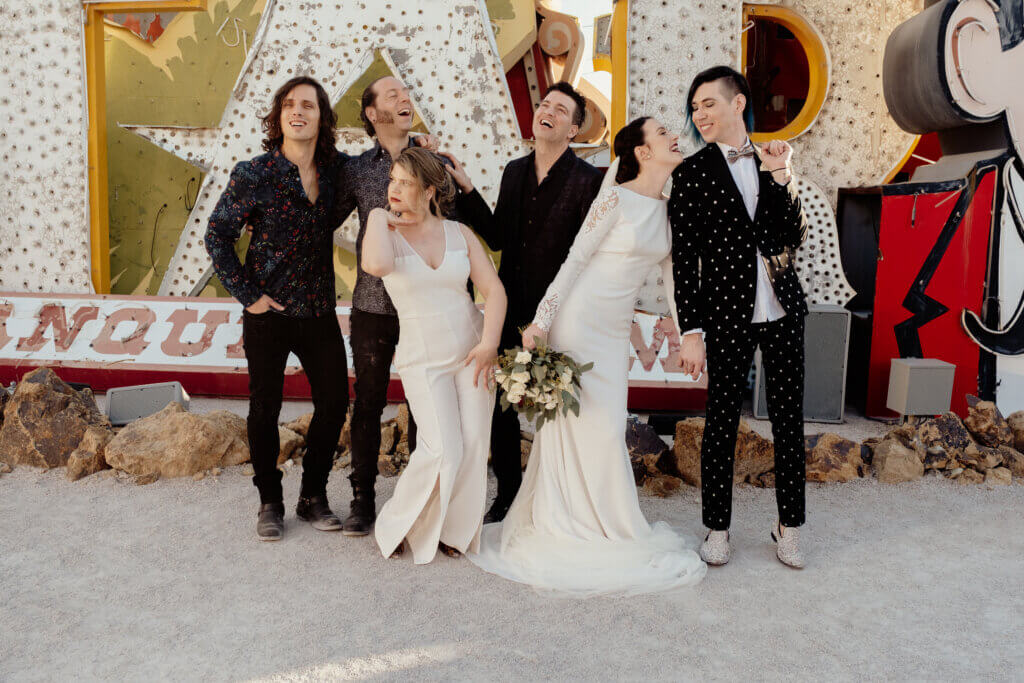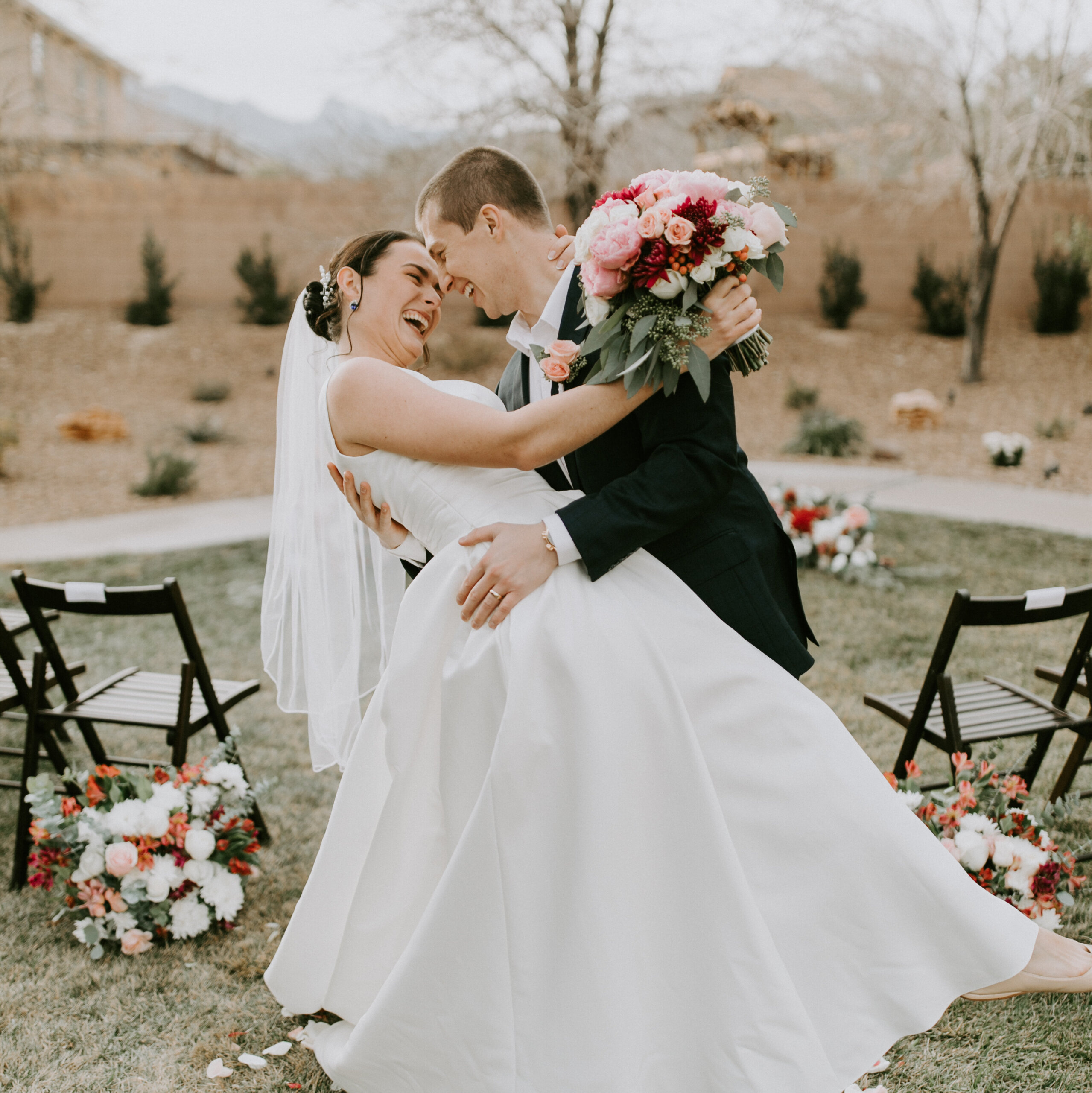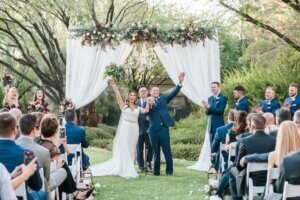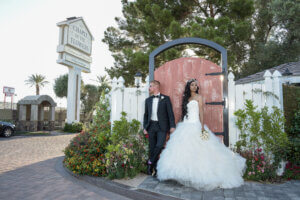When Meagan Drillinger began planning her dream wedding last year, a wedding budget was front and foremost in her mind. As a travel writer, every penny counts. Drillinger wanted to create a special experience that expressed her and her husband David’s personalities, but that also didn’t leave her thousands of dollars over budget and in debt.
She knew she wanted a boho-woodsy-elevated cabin vibe to her special day, which was held outside in a bucolic, country location. Once she had that vision in place, she went about figuring out what was important to her.
“I knew flowers, centerpieces and a lot of the decorative stuff was less important to me (so) I got a bunch of candles from the Dollar Tree and cheap cylinder vases and created my own centerpieces with some greenery. I also got some lanterns off Amazon to create my vibe,” says Drillinger.
Be Realistic About Your Wedding Budget

Jumi Aluko, the owner of DUNNI Weddings + Events, says the first step to setting a budget is to be realistic about the cost of hosting a wedding. How do you do this? Start with your guest count. You need to know how many people you plan on having at your wedding before you can calculate how much the venue and catering will cost.
“Once you know your guest count, you can either reach out to a wedding planner and hire them to help you start building your budget or reach out to venues, and caterers if your venue does not provide food, and get real numbers,” Aluko says. “Keep in mind these may not be numbers that you were expecting, but it’s important to acknowledge it – and then figure out how you’re going to make it work.”
She also says it is very important to be 100% clear on where the paper is coming from when setting a budget.
“How much will you contribute? How much will your future spouse contribute? (And) how much will you get from your family? Knowing these amounts, or at least estimates, will allow you to accurately create your budget, giving you a strong starting point.”
How to Stick to the Budget
Jessica Bishop, founder of The Budget Savvy Bride, has this advice for setting the budget and then sticking to it.
“My first piece of advice for setting a wedding budget is to always start by getting clear on the vision you have for your wedding day. Discuss with your partner what you each desire and value about celebrating your union, then work through prioritizing which aspects you hold most important,” she says.
She also suggests outlining your essential elements and desired extras, then setting realistic financial boundaries for each category.
“You’ll need to be practical in factoring up how much you can actually afford, given your savings, what you can contribute to the budget over time, as well as any assistance from your families,” Bishop says.
Another way to stick to your budget is to get creative with cost-saving options, says Aluko, is to plan your wedding for Monday through Thursday.
“Having your wedding on a weekday can be as much as 50% cheaper than having it on a Friday or Saturday,” she says. “Also consider getting married in the off-season of whatever destination you choose.”
In Las Vegas, the off-season is the hottest months of the year. While others might consider a summer desert wedding a mistake waiting to be made, there are other ways to cut down on budget, such as eloping the very same place.
What to Cut If You Are Running Over Budget

Bishop says if you find yourself exceeding the budget you’ve set, it’s time to make strategic adjustments.
“Go back to that list of priorities you’ve made. Decide what items are discretionary expenses that can be eliminated, such as decorative embellishments or things that don’t truly enhance the experience. Some simple ways to trim costs are to shorten your guest list, explore do-it-yourself options for decor, or consider scaling back on florals,” she says.
Amber Massey, who is the owner of Epic Elopements, a planning service focused on budget conscious, micro-weddings with less than 50 guests that also offers Vegas packages. She says cutting your guest list down is the first step.
“Pair it down to the bare bones. Sit on it for a week or two and decide if you are happy about it,” she says. “The other things that gets crazy expensive are flowers and photography. Professional photography is never something I would recommend cutting. But have two hours instead of six to eight hours of coverage. You can get in your ceremony photography, family photography, and bridal portraits in two hours or less, depending on your guest list.”
Finally, Don’t Stress Too Much!

At the end of the day, try not to stress too much about having the “perfect” wedding aesthetic, Drillinger says.
“So much of what you think you want will end up changing. I had the ‘perfect vision’ for my wedding, and it ended up thunder storming the entire day,” she says. “But because everything was laid-back and casual, we were able to pivot pretty easily and host everything under the tent and it ended up even better than I could have imagined.”



